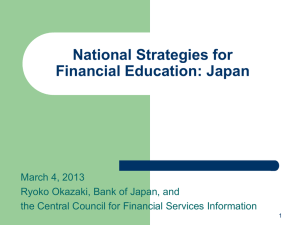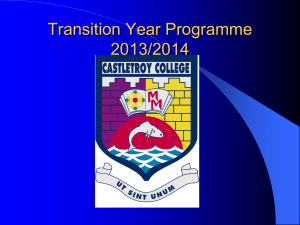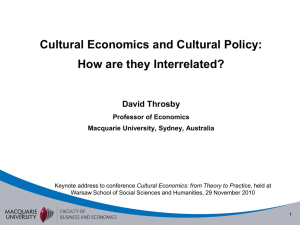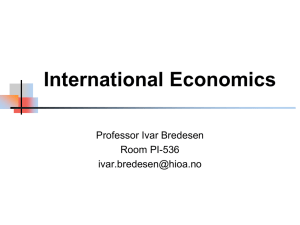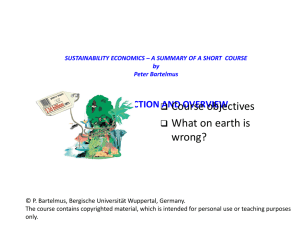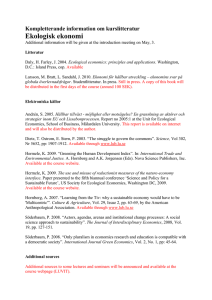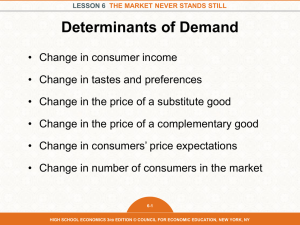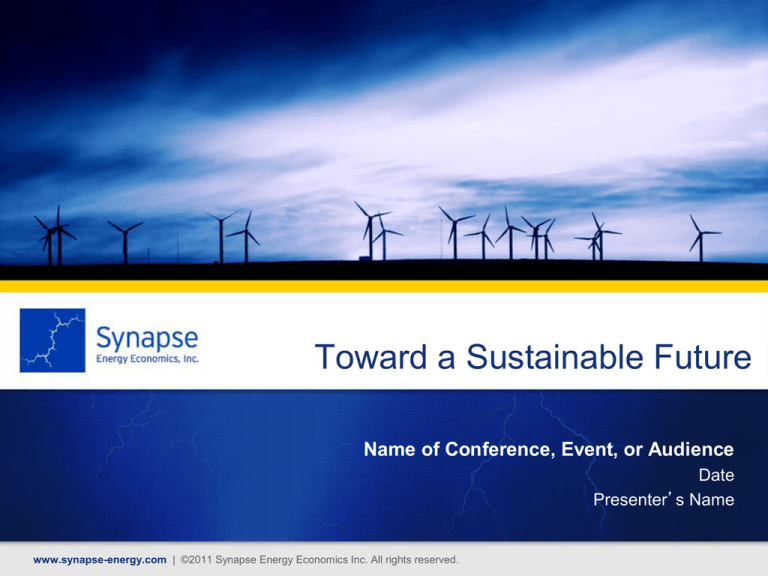
Toward a Sustainable Future
Name of Conference, Event, or Audience
Date
Presenter’s Name
www.synapse-energy.com | ©2011 Synapse Energy Economics Inc. All rights reserved.
Overview
• Study funded by the Civil Society Institute and
performed by Synapse Energy Economics
• Focuses on the U.S. electricity sector
• Compares a “business as usual” future to a
scenario in which all coal-fired plants and nearly a
quarter of the nation’s nuclear plants are retired by
2050.
•
Reliance on energy efficiency and renewable
resources is increased, while natural gas use is
lower than under business as usual.
www.synapse-energy.com | ©2011 Synapse Energy Economics Inc. All rights reserved.
2
Methodology
• Business as Usual (BAU) scenario based on the Energy
Information Administration’s (EIA) 2011 Annual Energy
Outlook (AE0)
• A transition to energy efficiency and renewable energy is
compared to BAU
• The Transition Scenario relies on technologies that are
commercial today
• Cost assumptions based on the AEO and a broad review
of the literature
• Analysis assumes implementation of newly proposed EPA
regulations
• Analysis performed on a regional basis (using 10 regions)
www.synapse-energy.com | ©2008 Synapse Energy Economics Inc. All rights reserved.
3
Electricity Generation
• Electricity use grows
by 0.9% annually
under BAU.
• Use falls an average
of 0.1% per year in
the Transition
Scenario due to
enhanced energy
efficiency
nationwide.
• Efficiency
assumptions based
on current best
practices.
www.synapse-energy.com | ©2011 Synapse Energy Economics Inc. All rights reserved.
4
The Generating Fuel Mixes
www.synapse-energy.com | ©2011 Synapse Energy Economics Inc. All rights reserved.
5
Generating Capacity in 2050 in the
Transition Scenario
• Without coal (and with less nuclear) regional power systems are more flexible.
• Gas-fired combined-cycle combustion turbines (CCCTs) and
combustion turbines (CTs) help to integrate variable generation.
www.synapse-energy.com | ©2011 Synapse Energy Economics Inc. All rights reserved.
6
Mercury Emissions in the Two Scenarios
45
40
35
30
Tons
25
20
15
10
5
0
2010
2020
BAU
2030
2040
2050
Transition
www.synapse-energy.com | ©2008 Synapse Energy Economics Inc. All rights reserved.
7
SO2 Emissions in the Two Scenarios
6
5
Million Tons
4
3
2
1
0
2010
2020
Ref erence Case
2030
2040
2050
Alternative Case
www.synapse-energy.com | ©2008 Synapse Energy Economics Inc. All rights reserved.
8
Nox Emissions in the Two Scenarios
2.5
MIllion Tons
2.0
1.5
1.0
0.5
0.0
2010
2020
BAU
2030
2040
2050
Transition
www.synapse-energy.com | ©2008 Synapse Energy Economics Inc. All rights reserved.
9
CO2 emissions in the Two Scenarios
Electric sector CO2 emissions rise 28% under BAU. They fall
81% in the Transition Scenario.
www.synapse-energy.com | ©2011 Synapse Energy Economics Inc. All rights reserved.
10
Water Impacts in the Two Scenarios
Water Withdrawals at Power Plants
Water withdrawals fall dramatically
in both scenarios due to cooling
system retrofits assumed under BAU.
Water Consumption at Power Plants
Water consumption rises under BAU
due to retrofits (more water is lost in
evaporative cooling), but it falls
significantly in the Transition.
www.synapse-energy.com | ©2011 Synapse Energy Economics Inc. All rights reserved.
11
Electric Sector Natural Gas Use
Natural gas use is lower than BAU in all years of the study
period. In 2050, gas use is below BAU by 3.7 quadrillion Btu
per year, or 28%.
www.synapse-energy.com | ©2011 Synapse Energy Economics Inc. All rights reserved.
12
Cost analysis
Net Annual Costs (billion 2010$)
• The Transition Scenario costs less through most of the study period.
• The net present value (NPV) of the 40-year stream is a savings of
$83 billion, discounted at 4.8%.
• Savings are small relative to total industry costs.
www.synapse-energy.com | ©2011 Synapse Energy Economics Inc. All rights reserved.
13
Key drivers of cost findings
Under BAU:
• New nuclear energy is expensive (assumed to be
14.5 ¢/kilowatt hour (kWh)).
• New coal plants are costly too (10.5 ¢/kWh using
AEO assumption)
• As a comparison, energy efficiency is estimated
between 2010-2020 to be 4.7¢/kWh and onshore
wind 7.4 to 9.3 ¢/kWh.
• Energy from existing coal becomes more costly as
well, due to higher coal prices and environmental
control retrofit costs.
www.synapse-energy.com | ©2008 Synapse Energy Economics Inc. All rights reserved.
14
Key drivers of cost findings (cont.)
The Transition Scenario:
• Captures cost-effective efficiency opportunities.
• Relies on lower cost renewable resources first (e.g
wind), solar photovoltaic (PV) technology later, after
costs have come down.
• With the retirement of significant coal-fired capacity, the
utilization of remaining coal units increases, reducing
their cost per kWh.
• The $83 billion in savings realized in the Transition
Scenario does not include direct subsidies, the costs of
carbon capture and sequestration, or savings from
reduced impacts on public health.
www.synapse-energy.com | ©2008 Synapse Energy Economics Inc. All rights reserved.
15
Other benefits
• Over $100 billion in environmental retrofit costs is
avoided by retiring coal plants.
• Avoided health costs are roughly $450 billion
equivalent to over 55,000 fewer premature deaths.
(However, these savings are not included in the
cost/savings analysis of the Transition Scenario.)
• 3.1 million new job-years (over 300,000 jobs)
created in building and operating efficiency and
renewable energy plants between 2011 and 2020.
Broader economic analysis is required to assess
full employment impacts.
www.synapse-energy.com | ©2008 Synapse Energy Economics Inc. All rights reserved.
16
Other Benefits (cont.)
• Adequate reserve margins are sustained in each
region of the country to maintain reliable electric
service.
• Reducing reliance on baseload coal and nuclear
plants frees up transmission capacity for more
wind and solar resources.
www.synapse-energy.com | ©2008 Synapse Energy Economics Inc. All rights reserved.
17



